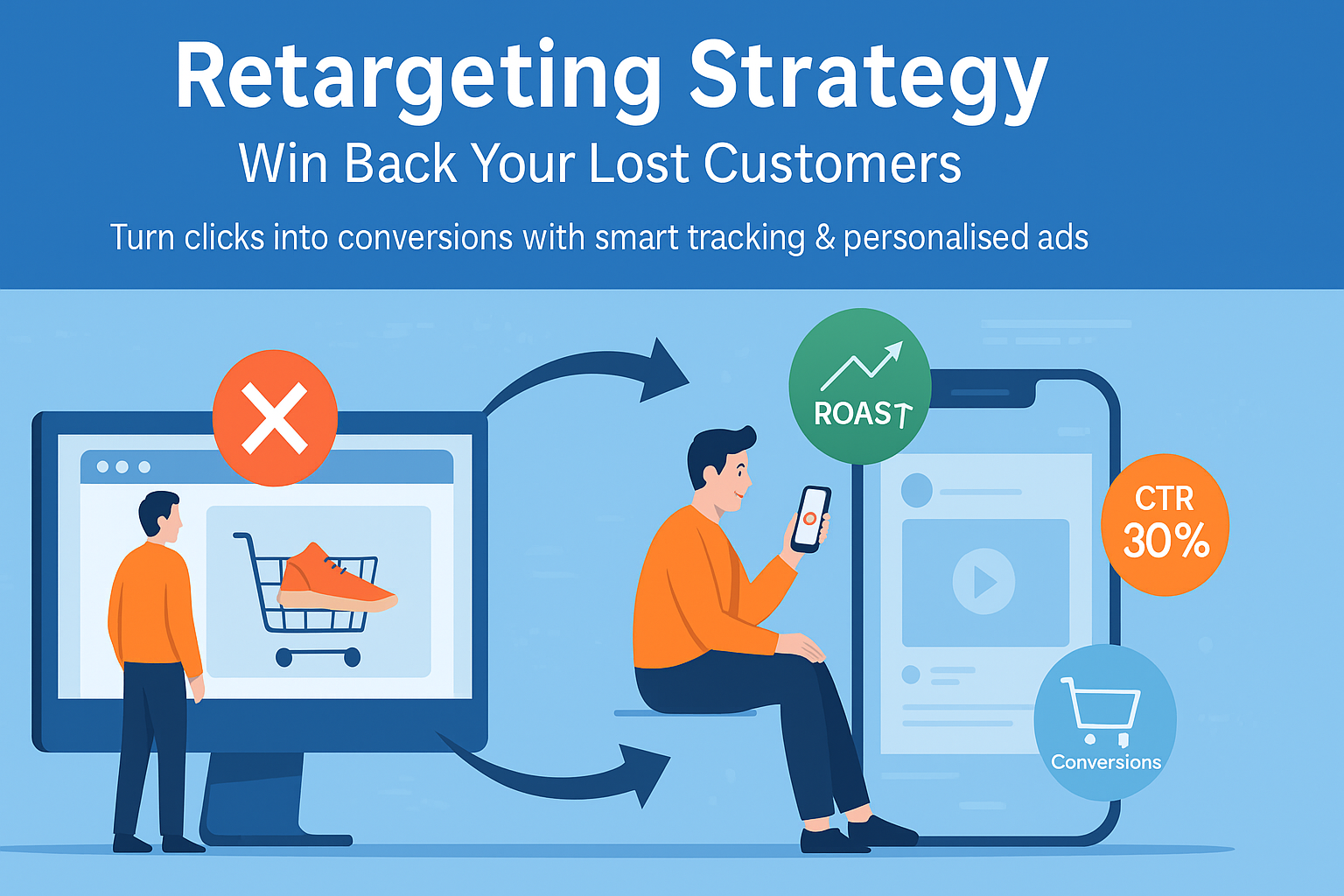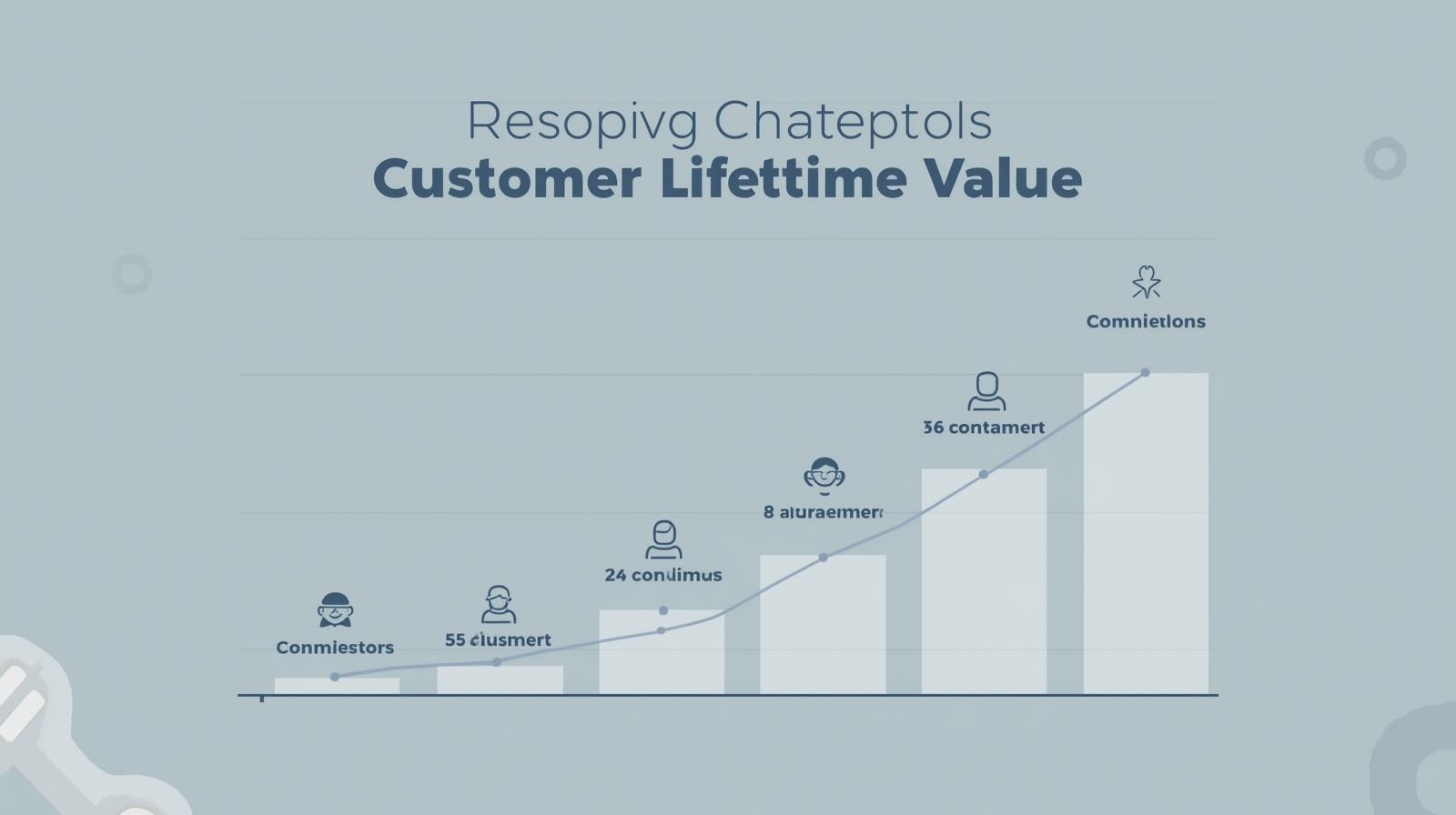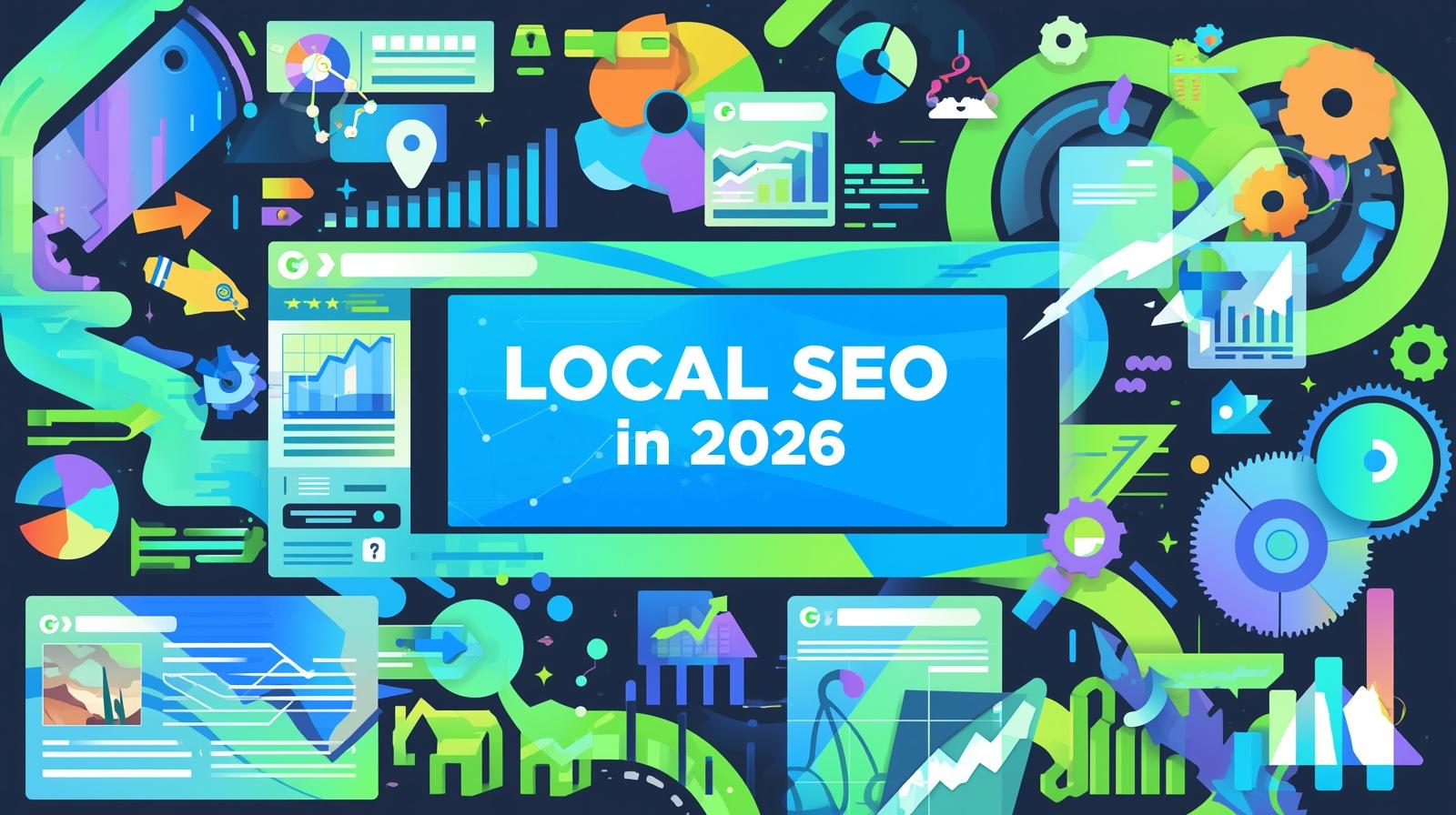Suppose a customer lands on your website, saves the product to the cart and leaves. Alternatively, suppose a customer interacted with your ad on social media but did not complete any desired action. You can learn from customer engagement that they are interested in your product and are likely to make a purchase. It is also likely that the same customer will go to a different website in your product niche and make a purchase from there. In this situation, you lose a potential customer because you didn’t follow up to remind them of your products or services. But how do you reach out to the same customers again? This concept is known as retargeting in digital marketing.
Retargeting is a subset of remarketing where you target individuals who have interacted with your website, ads or social media pages before. The customers sometimes leave without completing the desired action, i.e., making a purchase, booking a consultation, etc. You can target those customers again through a robust retargeting strategy. Our marketers at VerveOnlineMarketing, a prominent SEO company in Bangalore, understand the importance of a carefully crafted retargeting strategy. A well-designed retargeting strategy will help your brand discover customers you didn’t even know existed.
Are You Following the Primary Steps of Retargeting?
Retargeting allows you to recapture the audience you missed in your ad campaigns. It is a value-adding, measurable and trackable tactic of digital marketing that helps businesses grow and drive conversions. There are primarily four steps of retargeting. Following these will help you understand how customers are engaging with your product across various channels and platforms. Let’s understand these –
Tracking
When a customer visits your website for the first time, it deploys a tag or pixel. This pixel captures user behaviour on your website, which can be anything. The pixel tells you about user behaviour, including which pages they view, what products they browse or save in their wishlist, etc. A cookie stores this customer information for future reference. The cookie is now present in their browser, holding all information about their visit to your website.
You can track customers using tags or pixels. Now, suppose that the customer is watching a news channel which uses the same pixels as your website. You must know that retargeting works on sites having the same pixel. A pixel is nothing but a small bundle of code that sends data to the server.
In addition, you can target customers through email-based retargeting and product-focused retargeting methods. Email-based retargeting is a traditional concept of retargeting where you can use customers’ email addresses. Email retargeting is efficient for past customers, known leads, etc. Product-focused retargeting is dynamic retargeting which shows ads to customers automatically. It is a classic example of retargeting you see on platforms like Instagram and Myntra.
For instance, suppose that you browse a men’s watch on Myntra but do not complete the purchase. Now, when you are using any social media platform, i.e., Instagram, you are most likely to see an ad showing the same product you browsed on the shopping site. Dynamic retargeting shows the ads of specific services and products you browsed on another platform. In this particular example, think of it like pulling the product from the website and showing it on the website that the customer is currently using. It gives a tailored ad experience to customers and nudges them to complete the desired action.
Segmentation
The next step of retargeting is segmentation. Segmentation allows you to group the customers according to their shared interests, activities and preferences. The pixels also have the data of user behaviour on the website. It can also tell you the intent of customers browsing your website.
For instance, you can group the customers in the same group who viewed similar pages. The grouping of customers who browsed for similar products is possible. On the other hand, the customers who saved products to their carts can be targeted as a group. Similarly, you can group the customers in one segment if they searched for he product for the first time. For the repeating customers, you can create a group separately to send them personalised messages. This is what customer segmentation looks like.
Personalisation
In this stage, you are trying to reach out to your customers with personalised offers, messages, ad creatives, copies, etc. You can create separate ad creatives and personalised offers for different customer segments. This way, customers can resonate well with the messages and offers. They will also receive personalised recommendations based on their search history and website use.
Personalisation is a crucial part of a retargeting strategy. AI personalisation allows customers to view the products they will most likely purchase. The product recommendations are based on the past purchase history and customer interaction on the website. You should aim for at least 1,000 customers in one group segment. Making smaller customer segments may take more of your ad budget. You can send timely nudges, emails or notifications to your customers using personalised tones and messages. VerveOnlineMarketing is the best seo company in Bangalore, providing paid ad services to help brands discover their most potential customers.
Channel Targeting
Lastly, you can retarget your customers by running ad campaigns on multiple platforms. You can select various platforms based on insights into where your customers spend the most time. It is important to choose the right platforms and channels for retargeting. Choosing to run ads without researching your audience may exhaust your ad budget limit.
You should target the platforms where you think your customers will most likely be present. In order to run a successful retargeting ad campaign on Meta and Google, ensure proper tracking, segmentation and channel targeting to produce reliable results.
Why Does Your Business Need A Retargeting Strategy?
Cost-Effective Branding
One of the primary reasons businesses should adopt a retargeting strategy more actively is its cost-effectiveness. You can scale your ads effectively to reach a wide range of audiences. By retargeting different customer segments, the cost per click rate is lower and the conversion rate is higher. These are the customers who have already interacted with your brand and its products. Hence, your retargeting campaign is most likely to resonate with them to complete the desired action.
Repeated Brand Exposure
Retargeting campaigns can be a boon for you if you are running your ad correctly. It doesn’t let your potential customers forget about you. Hence, proper segmentation of customers is important. Moreover, you should design your ad creatives keeping different segment groups in mind. If a segment has customers who abandoned their cart, your ad creative should drive them from the consideration to the conversion stage of the marketing funnel.
Retargeting Ads Reach the Right Audience
If your marketing efforts are not leading to conversions, it’s a waste of ad budget. However, the retargeting strategy reaches all the potential customers who have shown interest previously. To track the same customers and engage with them requires a custom retargeting strategy. It should include proper customer segmentation, personalisation and tracking KPIs like ROAS, conversion rate and click-through rate.
What Should I Do Next?
The first step is to determine if you need retargeting. Suppose your ad campaign did not perform as well as you expected. In this case, you must have a lot of leads from customers who visited your website in the past. However, not all the customers led to conversion. Among different retargeting types, you have the option to choose between simple display retargeting, native advertising, search retargeting or social media retargeting.
In simple display retargeting, businesses can display ad creatives to people on different search engines. The customers browsing search engines will be able to see the ads for your website’s products. They may be compelled to visit the website again to make the purchase. The next strategy marketers use is to provide native ads to website visitors. It shows new ad copies on the business website where the website visitors can see new information and personalised messages. You can run personalised ads on social media platforms for your customers in different segments. The customers belonging to the same segment will see similar ad creatives that drive the conversion.
Finally, it’s important to track the re-targeting ad performance using key performance indicators. The indicators include ROAS (Return on Ad Spend), conversion rate, click-through rate, and cost per acquisition. These crucial metrics help you discover which of your ad creatives are not getting much engagement. It also helps in determining the effectiveness of ad spend value in driving conversions and getting clicks on CTAs.
To Sum Up
Running re-targeting campaigns is extremely effective as it allows you to target potential customers who have previously interacted with your website. Segment your audience into different groups based on their interests, behaviour, price-centred browsing, etc, to create custom ad campaigns that fulfil their needs. You can create custom personalised messages and offers for different customer segments. You can use list-based and pixel-based advanced techniques of retargeting to refine your marketing approach.
Targeting is a strategic approach of digital marketing where businesses can optimise the ad spend effectively. If you actively struggle with paid ads and retargeting campaigns, our marketers and experts will create custom campaigns for your business that meet your business goals. VerveOnlineMarketing, an SEO services company Bangalore, is also well-known for its performance marketing, paid ads, SMO and SMM.






